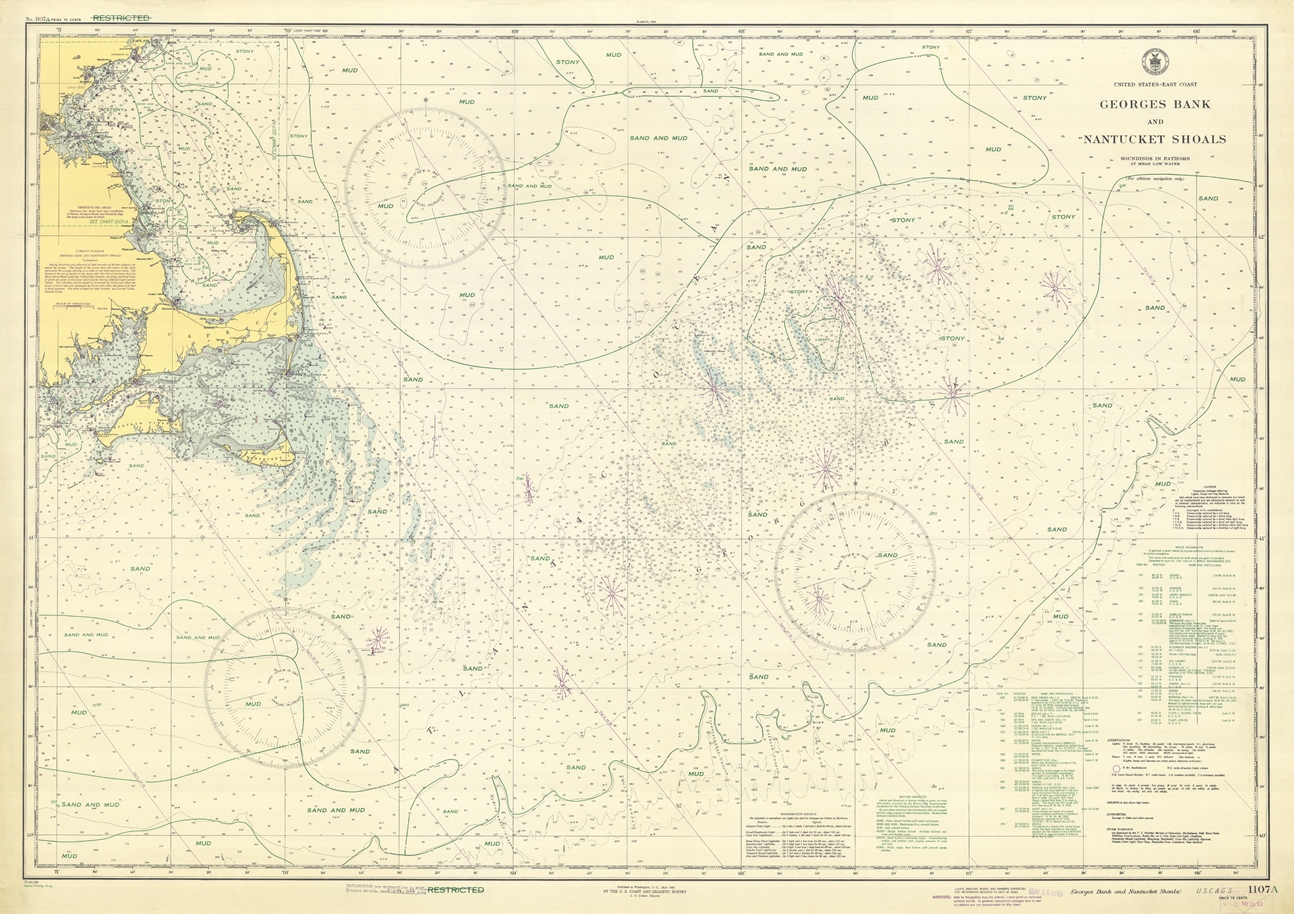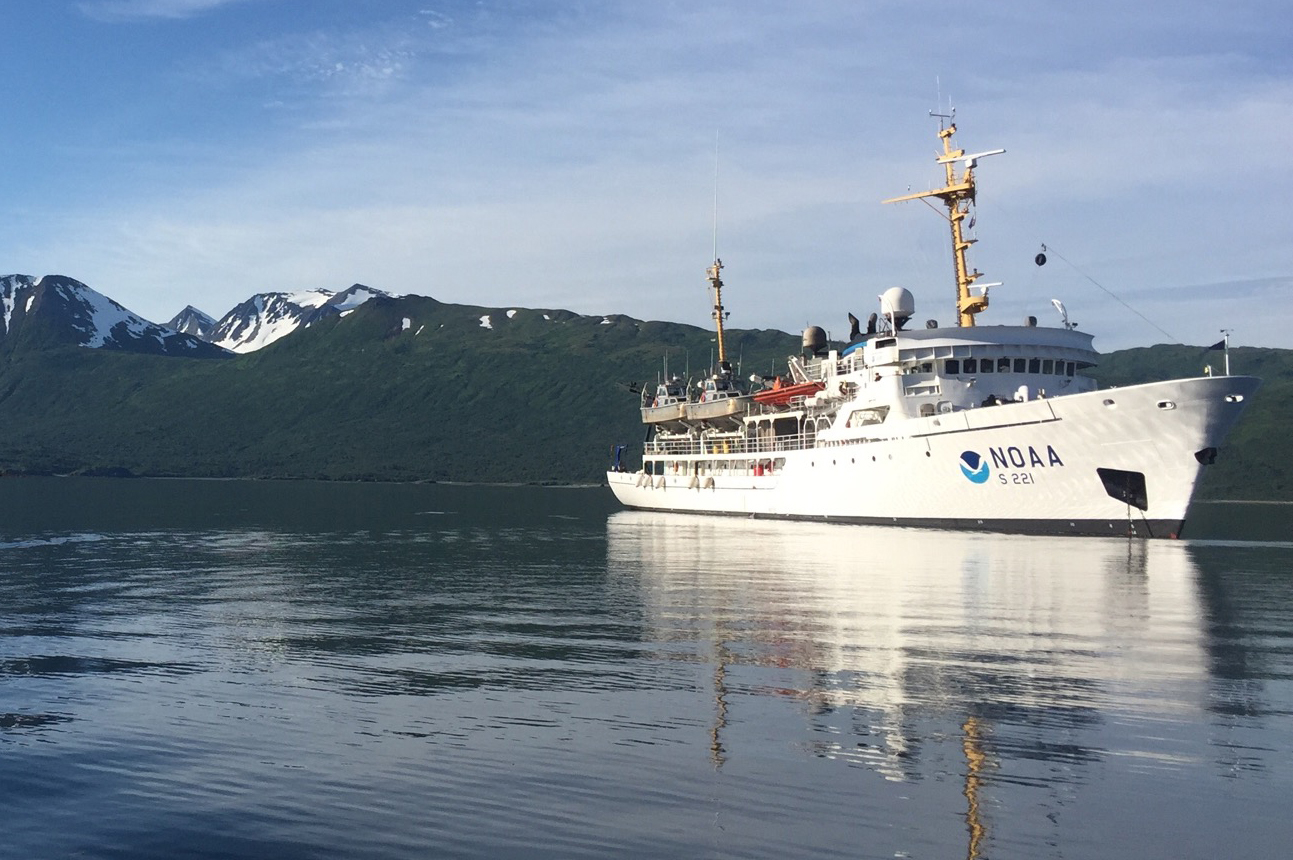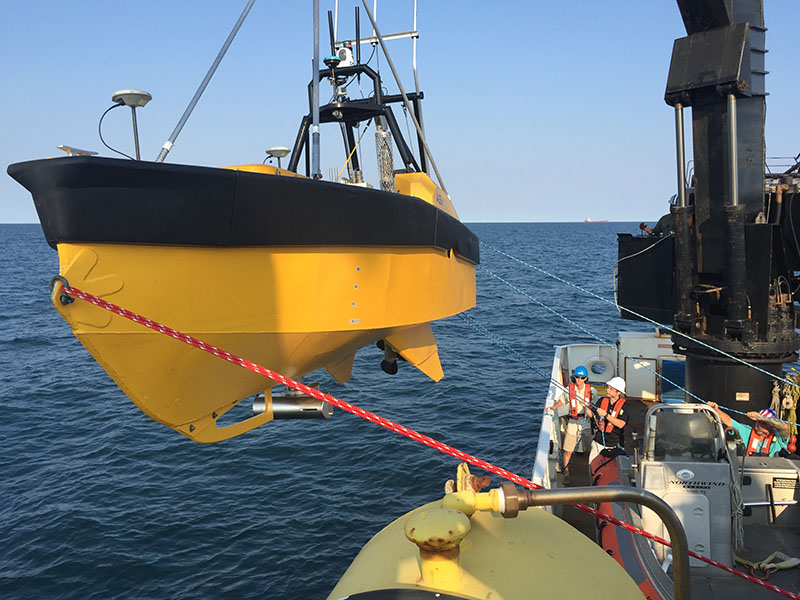On September 15, 2016, President Obama designated the first marine national monument in the Atlantic Ocean. The Northeast Canyons and Seamounts Marine National Monument includes two areas: one that includes four undersea mountains, called “seamounts” – Bear, Mytilus, Physalia, and Retriever; and an area that includes three undersea canyons – Oceanographer, Lydonia, and Gilbert – that cut deep into the continental shelf. These sea features have monumental histories.

Continue reading “A monumental history”
NOAA Ship Rainier surveys Uganik Bay
By Ensign Michelle Levano
NOAA Ship Rainier recently arrived in Uganik Bay, off of northwest Kodiak Island, to complete hydrographic survey operations in Uganik Passage and Uganik Bay, including the Northeast Arm, North Arm, and South Arm. Rainier has spent 2013 through 2016 surveying areas around North Kodiak Island, including Kizhuyak Bay, Whale and Afognak Passes, Kupreanof Strait, and Viekoda and Terror Bays. The ship will remain in Uganik Bay until the end of October.

Continue reading “NOAA Ship Rainier surveys Uganik Bay”
Hydro on the Great Lakes: preserving American history
By Ensign Max P. Andersen
Formed by retreating ice sheets over 14,000 years ago, the Great Lakes have long represented one of the most valuable fresh water resources in North America. They contain more than one-fifth of the world’s supply of fresh surface water, and the vast size is easily visible from space. From Native American hunting routes to French fur-trade exploration to influential battles in the War of 1812, the Lakes have proved a key platform for numerous historical events that shaped the development of the country.
Uniquely, these bodies of water served as the gateway to connect the booming production of an expanding population in the Midwest from 1825 to 1925. During this time, a broad range of wooden, sailing, and steam-powered ships trekked across the lakes, carrying coal, grain, and passengers. Due to unpredictable weather conditions, fire, ice, high-traffic areas, and an ever-increasing pressure to meet shipping quotas, hundreds of ships were lost in collisions and accidents. These incidents have earned this period the nickname “Shipwreck Century.” Today, the history of the “Shipwreck Century” is presented at Thunder Bay National Marine Sanctuary’s visitor’s center, the Great Lakes Maritime Heritage Center, in Alpena, Michigan.
Thunder Bay is located in Lake Huron, near one of the most historically dangerous areas of navigation in the Great Lakes. The sanctuary covers 4,300 square miles. In this area, over 200 shipwrecks are known to exist, and 92 have been discovered and accurately charted. The staff provides continual archaeological monitoring to ensure the preservation of the sites.
Continue reading “Hydro on the Great Lakes: preserving American history”
Unmanned surface vehicles evaluated for hydrographic survey
Just over a year ago, Coast Survey began testing the use of small unmanned surface vehicles (USV) to survey the shoalest depths, areas along the shore where NOAA ships and their launches are unable to reach. These USVs proved beneficial not only for mapping shallow, murky waters, but also for improving the efficiency of our hydrographic operations. So what is the next step in evaluating USV technology? Testing larger, longer-lasting USVs and taking them beyond shallow waters.
This September, Coast Survey is partnering with the National Centers for Coastal Ocean Science (NCCOS), the Office of Marine and Aviation Operations (OMAO), NOAA Ship Nancy Foster, and ASV Global, an unmanned vehicle manufacturer, to conduct an operational evaluation of a USV, called the C-Worker 5, during a bathymetric and marine habitat survey offshore of the Carolinas.
Continue reading “Unmanned surface vehicles evaluated for hydrographic survey”




